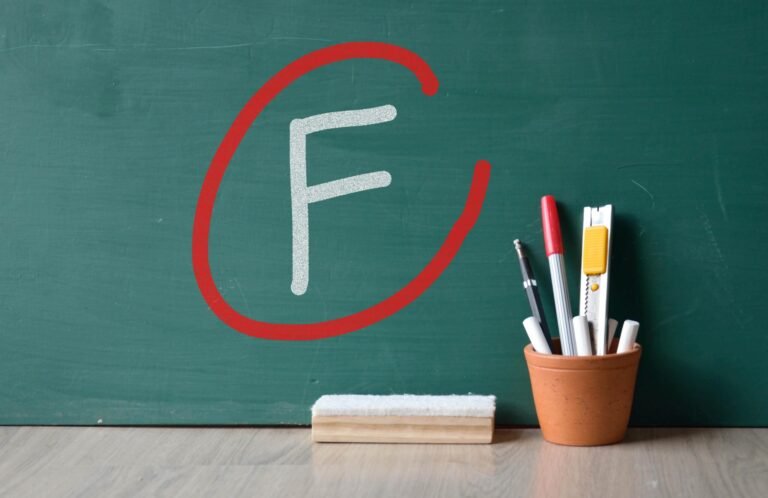Earlier this month, the Texas Education And Learning Firm (TEA) revealed that 12 Austin-area institutions with an “F” score might be shut. For lots of family members, this isn’t simply a plan choice– it’s a straight danger to countless kids’s academic security and their neighborhoods’ future.
The impacted institutions, all component of Austin Independent College Area (AISD) obtained 3 successive falling short qualities under the state’s responsibility system linked to the State of Texas Analyses of Academic Preparedness (STAAR) test. TEA purchased the universities to send enhancement strategies by mid-November, which might entail significant staffing adjustments or closures. The institutions consist of Winn Montessori, Barrington, Dawson, Linder, Oak Springs, Pecan Springs, Sanchez, Widen, Wooldridge, Bedichek, Martin, and Paredes. As education and learning scientists and neighborhood supporters, we understand that college rankings usually expose much more concerning hardship than concerning trainee knowing. Years of research study reveal that standard examinations do not determine intelligence, creative thinking, or strength. They determine postal code. Countless research studies likewise highlight the straight connections in between the screening market and the jail commercial complicated.
The issue is clear: Austin’s “F” institutions extremely offer primarily low-income African-American and Hispanic kids. Closing them on the basis of a mistaken statistics sends out one message: Your neighborhood does not issue.
More particularly, information from the Texas Academic Efficiency Record details that the twelve Austin ISD universities in danger of closure or significant treatment offer mainly low-income African-American and Hispanic trainee populaces (see a complete graph below): At these universities, in between 78 percent and 97 percent of pupils are identified as financially deprived, with a lot of institutions going beyond 90 percent. This highly recommends that socioeconomic standing, not training top quality, is one of the most regular forecaster of college rankings. Research study has actually long shown that hardship forms academic end results with restricted accessibility to sources, greater flexibility prices, and boosted direct exposure to stress factors beyond college. The racial and ethnic structure of these exact same institutions is in between 57 percent and 91 percent Hispanic, while African-American registration arrays from 1.9 percent to almost 39 percent. The clustering of F-rated institutions in mainly Black and brownish communities highlights the racialized nature of standard screening end results, lining up with scholarship that critiques responsibility systems as systems that duplicate racial and course stratification.
TEA’s responsibility system overmuch punishes institutions that offer financially deprived pupils of shade. All twelve institutions recognized for enhancement or closure obtained falling short (” F”) rankings, yet their trainee demographics highlight architectural injustices instead of shortages in training or knowing.
Parents and educators have actually long understood what research study verifies: Standard screening is a bad forecaster of success. It compensates test-taking approaches, not inquisitiveness. It benefits pupils with sources, tutors, and security in the house, while punishing those browsing hardship, language obstacles, or injury.
Standardized screening has actually ended up being a billion-dollar service. In 2013, TEA granted Pearson a $462 million agreement, complied with by a $280 million agreement with Education and learning Screening Solutions. Country wide, 45 states invest a mixed $669 million yearly on screening agreements. These firms gain substantial earnings, yet there is no proof that even more standard screening enhances trainee knowing or tightens success voids. What these examinations do determine– dependably– is the capacity of firms to siphon sources far from Texas pupils, educators, and neighborhoods.
Rather than increasing down on screening, TEA must decrease the variety of examinations and give genuine assistance. Prior to shutting institutions, the company should involve neighborhoods in sincere discussions concerning what kids require to grow– whether it’s even more multilingual team, smaller sized courses, or after-school programs.
Austin’s kids are worthy of greater than an examination rating. Closing institutions will certainly not construct more powerful neighborhoods. Paying attention to them will. TEA should select collaboration over penalty.
A expanding body of scholarship prompts states to relocate past solitary examination ratings and take on numerous procedures of responsibility. Such systems much better record the breadth of trainee knowing by including college graduation prices, university and occupation preparedness, accessibility to certified educators, and college environment. Genuine evaluations– such as job- and portfolio-based assessments– use feasible options that determine higher-order reasoning and trainee creative thinking while continuing to be certified with the government Every Pupil Succeeds Act, which clearly licenses states to incorporate profiles, prolonged efficiency jobs, and flexible evaluations right into their responsibility systems. Regardless of this adaptability, Texas remains to count nearly solely on high-stakes standard examinations, neglecting reputable suggestions for even more fair, thorough strategies to reviewing trainee knowing and college top quality.
At the state plan degree, Texas have to basically reassess responsibility. Policymakers, TEA, and college leaders must develop school-based groups to gather and assess both measurable and qualitative information, guaranteeing that choices are based in the truths of pupils, family members, and instructors.
These initiatives have to focus on institutions with the best demands and the least sources, supplying continual assistance instead of corrective closures. Particularly, TEA must finish expensive evaluation agreements with for-profit firms and reroute those funds right into class, counseling solutions, culturally pertinent educational programs, and neighborhood involvement efforts that really reinforce institutions.




